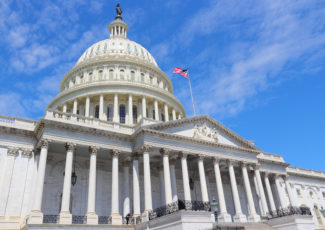Financial Aid Reform May Help More Students Graduate
By Sonya Stinson
March 23, 2015
Policy analyst Rachel Fishman discusses student flexibility, Pell Grants and more.
A financial aid system that dispenses award money only in the fall and spring and rarely counts nontraditional courses as eligible credit hours may not be serving the average community college student well.
In Community College Online, a recent policy paper, New America senior policy analyst Rachel Fishman states that the expansion of innovative course delivery models that mix face-to-face, online, competency-based and hybrid courses would help more community college students graduate faster. But before that can happen, federal, state and institutional financial aid policies need to change.
We reached out to Fishman to discuss some of her suggested reforms.
AACC: How does the report attempt to bring awareness to the biggest challenges students face in completing their degrees?
Rachel Fishman: The biggest challenge that community college students face is that they have life events that get in the way. What the report was aiming to do was ask, how can we introduce an amount of flexibility for that student who, sometimes because of life circumstances, [won’t] be able to just drop everything and enroll full time? How can we support those students to get across the finish line in the enrollment pattern that makes sense for them?
How important is the availability of financial aid for these students?
This is a big issue at the community college level. You have to be at least a half-time student to have access to things like loans. Not every student is going to be able to be half time or more. As I point out in my report, maybe if we had the ability for students to take one face-to-face course and one online course, we could get them to half-time status.
Another barrier involves the full-time student who is Pell Grant–eligible. Currently, you can’t give a Pell Grant year-round for full-time students. That’s just another way that [current policy] sort of stacks the deck against these students.
I also talked about state financial aid being a factor. There are a lot of state financial aid grant programs, but many of them are limited to direct-from-high-school students. But many community college students are adult learners returning to higher education after stopping at another institution — or maybe they’ve never been in higher education before. They don’t have access to those dollars based on an arbitrary age restraint.
You noted in the report that year-round Pell Grants were once offered for about a year and then scrapped because of cost concerns. How might those cost issues be addressed in a new version?
At the end of the day, it’s going to cost more money, so Congress has to realize that and design the program within whatever constraints it wants. The good news is that there seems to be bipartisan support for bringing the year-round Pell Grant back. And I think we have a better handle at this point about why the cost was so high. That program happened during the years of peak college enrollment, so of course the cost of the program was quite high. Now, that enrollment is starting to level off, and we’re having a little bit of a decline in enrollment as the economy continues to recover. Maybe now is a great time to think about how to design the program so that we have a better handle on cost but are still able to give aid to those students who want to attend year-round and get their degree at a quicker pace.
As your report mentions, some community colleges have taken steps to implement new programs that provide emergency funds and one-stop access to benefits for students. What kinds of promise do you see in these and other initiatives at the institutional level?
We hear lots of stories of community college students who are going along in their progression and they’re midway through the semester when, for example, their car breaks down, and they don’t have the money to pay for repairs. If there’s an emergency funding stream set up for the college, or a very low-interest, low-cost loan, the student could be in class.
In terms of one-stop benefit access, I think those are wonderful ways to leverage all of the federal and state benefits that students may not be aware that they qualify for. When a student walks in the door and says, ‘I need financial aid,’ and is directed toward the access program, they may find out that not only do they qualify for the Pell Grant, which will help cover their tuition and fees, but they may also qualify for things like food stamps. Finally there’s someone there to help them navigate the benefits that they should already be receiving.
Anything that leverages something that somebody already should be receiving is a win for the community college and a win for the student. It gives them more resources to be the best student they can be and to stay in school.










